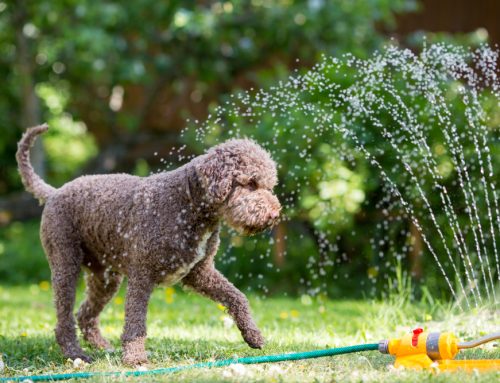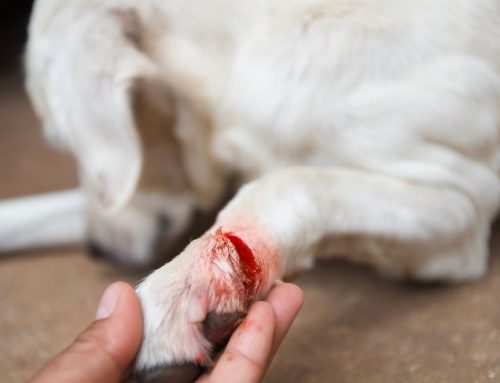Every pet is unique—some are escape artists, while others are counter-surfers, thrill seekers, dumpster divers, or weekend warriors. Regardless of your kind of pet, their natural hyperactivity, curiosity, or gluttony can get them into a lot of trouble—which can be life-threatening.
While thinking about pet emergencies is not pleasant, it’s important to know that many of the most common accidents, injuries, and critical situations can be avoided or prevented by taking some basic preventive steps. Check out these tips from Countryside Veterinary Hospital, so that you and your dog or cat can avoid the heartache of a pet emergency.
#1: Supervise your pet
This sounds simple, but many hazardous situations occur when owners allow their pets to go unsupervised—both indoors and out. Simple supervision can avoid potentially life-altering or life-ending disasters such as running away, toxin ingestion, electrocution, dog fights or attacks, or being hit by a car.
Supervision doesn’t have to mean keeping your pet constantly in your eye-line. To ensure a healthy relationship with your pet and foster their independence, you’ll want to balance time together with time alone. Safe ways to keep your pet secure and limit their access to dangerous areas or items include:
- Crates
- Exercise pens
- Pet gates
- Non-retractable leash
#2: Pet-proof the area
Whether you’re at home or traveling with your pet, ensure their area is free from potential hazards. While pet owners frequently ensure this step with puppies and kittens, they often reduce their vigilance with adult or senior pets. Unfortunately, this mistake can prove deadly—after all, pets are individuals with minds of their own, and senior pets may experience cognitive dysfunction or sensory loss that leads to uncharacteristic behavior.
Before allowing your pet freedom to roam, ensure their space is free from the following pet hazards:
- Electrical cords — Unplug or remove cords and wires that could be chewed.
- Toxic foods — Prepare food out of your pet’s reach, and keep trash cans behind a barrier. Familiarize yourself with pet-toxic foods, and instruct guests to not feed your pet from the table.
- Harmful plants — Check all garden plants, house plants, and floral arrangements for toxicity with this helpful resource.
- Medications — Pets may find human prescription medications in coat pockets, purses, on countertops, or dropped on the floor.
- Automotive fluids — Dangerous fluids include antifreeze, brake, and windshield washer fluids. Spills should be cleaned immediately, and any towels discarded.
- Pesticides and rodenticides — These poisons are equally toxic to dogs and cats.
#3: Choose your pet’s friends wisely—prevent fights and attacks
Pets can vary greatly in their desire to be social and their social skills. This disparity between the real world and movies about unexpected animal friendships has unfortunately led to many dog fights and attacks as owners believe their pets should be pals or “say hello.”
In fact, many dogs and cats feel uncomfortable or threatened in forced social situations, and stress, anxiety, reactivity, and, of course, fights or attacks may follow. While some altercations may be unavoidable (i.e., a loose dog who approaches on a walk), a few precautions can help protect both ends of the leash.
- Don’t force your pet to interact with an unfamiliar animal.
- Learn to read pet language—a stiffly wagging tail isn’t always friendly, and stillness is never good.
- Carry an air horn or dog deterrent to protect yourself and your dog if you’ll be walking near loose or stray dogs.
- Learn how to safely break up a dog or cat fight.
- Introduce new pets to current pets gradually, under full supervision.
#4: Be heat smart with your pet
High heat and humidity can be a deadly combination for pets, who rely on evaporative cooling to maintain their body temperature. Heatstroke and heat exhaustion often occur during warm weather, when pets are confined to a car or unshaded backyard, without access to water or cooling opportunities. Heatstroke can cause permanent organ damage, failure, and death. When the temperatures rise, play it cool with these steps:
- Exercise your pet during cooler hours (e.g., dawn and dusk)
- Ensure they have continual access to fresh cool water
- Limit outside time for brachycephalic breeds and senior pets
- Never leave your pet in a parked car—cracking the windows does not make a difference.
#5: Train your pet to respect snakes

Biologically diverse Alabama is native to many snakes—including six venomous species. Every year, curious canines end up on the receiving end of these surly serpents, and suffer painful and dangerous bites.
Rather than hastily trying to determine if a snake is “good” or “bad,” train your dog to give snakes a wide berth. Snake aversion training is essential if you live near a wooded area or a body of water, or frequently enjoy outdoor activities with your dog. Training should be positive, and typically involves teaching your dog that a snake is a visual cue to disengage, and perform a specific behavior, namely:
- Leave it
- Reorienting to the owner
- Walking away
While many helpful tutorials can be found online, we recommend teaming up with an experienced dog trainer for hands-on learning.
Pet emergencies are emotionally and financially costly—and your pet may pay the ultimate price. Rather than passively hoping these events don’t happen, Countryside Veterinary Hospital encourages you to take action and protect your pet with these easily achievable steps. Do you have questions about preventing other common pet emergencies? Contact our team.








Leave A Comment